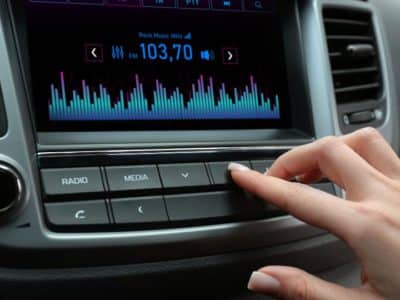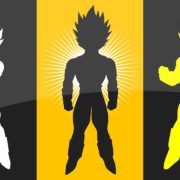Learning to play guitar chords is quite intimidating for beginners. You will need a lot of finger strength & flexibility to grab several strings in different fret positions at a time. The only way to get used to playing guitar chords is to practice in regular intervals.
There are easy guitar chords that you can learn within a few days of practice. In this article, you will find an overview of guitar chords & how to play some basic guitar chords. Using those chords you can play thousands of songs and have fun.
Table of Contents
What Is A Guitar Chord?
A guitar chord is a set of music notes played at a time by strumming or plucking in an Arpeggio sequence. It is the foundation to support every song and melody. Most guitar chords are built using three notes called triads.
The root note (lowest pitch) is the key to any chord construction. The chord quality (major, minor, diminish, augmented) determines the rest of the notes in a chord. You can create a chord using dozens of notes but the outcome would most likely be a vast disoriented resonance unfit for anything but experimental music.
The tuning of a guitar affects the implementation of the musical chords. Standard guitar tuning is the most popular tuning. All the chords I am about to discuss in this article are in standard guitar tuning.
How To Read The Chord Diagram
Reading a chord diagram is a piece of cake. Follow the below instructions and learn how to read any chord diagram.
- A chord diagram visualizes the neck of a guitar from the front as if you are holding your guitar in front of you. The vertical line on the left represents the low E string (6th string).
- The horizontal lines represent fret numbers. The first line on the top marks the open fret.
- The circles inside the string line define which strings to play on which fret.
- A cross over a string means it should not be played. A circle over the string means you have to play it as an open string.
- The numbers represent which finger to use to grab which note. The index finger is marked as number 1. In the same order, your pinky is the 4th finger.
Basic Guitar Chords
You can learn to play any guitar chord using a chord diagram. For beginner guitar players, I would recommend the following eight guitar chords:
- E minor (Em)
- E major (E)
- A minor (Am)
- A major (A)
- C major (C)
- D major (D)
- D minor (Dm)
- G major (G)
The list is in the order of easy to difficult levels. You will find Em as the easiest chord on the list. All of these chords play within the first three frets. These chords are also called open guitar chords. You need to play one or multiple notes on the open string.
1. How To Play The E Minor Chord
- Place your middle finger on the fifth string of the 2nd fret. Place your ring finger on the 4th string of the same fret
- Leave the rest of the strings open
- Strum all the strings & that is the Em chord.
2. How To Play The E Major Chord
Same as the Em chord. Instead of leaving the 3rd string open place your index finger on the first fret.
3. How To Play The A Minor Chord
- Place your middle finger on the 4th string of the 2nd fret. At the same time place your middle finger on the 3rd string of the same fret. Place your index finger on the 2nd string of the first fret
- Leave the 5th string open
- Strum the below five strings. You can mute the 6th string with your thumb.
4. How To Play The A Major Chord
Same as the Am chord. Instead of grabbing 2nd string of the first fret, use your pinky to grab the 2nd fret of the same string.
5. How To Play The C Major Chord
- Place your index finger on the 1st fret of the 2nd string, your middle finger on the 2nd fret of the 4th string, and your ring finger on the 3rd fret of the 5th string
- Leave the 1st and 3rd strings open
- Strum the five strings below & that is the C chord.
6. How To Play The D Major Chord
- Place your index finger at the 2nd fret of the 3rd string, your middle finger at the 2nd fret of the first string, and your ring finger at the third fret of the 2nd string
- Leave the 4th string open
- Strum the below four strings. You can mute the 5th & 6th strings with your thumb.
7. How To Play The D Minor Chord
- Place your index finger at the 1st fret of the 3rd string, your middle finger at the 2nd fret of the 3rd string, and your ring finger at the 3rd fret of the 2nd string
- Leave the 4th string open
- Strum the below four strings. You can mute the 5th & 6th strings with your thumb.
8. How To Play The G Major Chord
- Place your middle finger at the 3rd fret on the 6th string, your index finger at the 2nd fret on the 5th string, and your middle finger at the 3rd fret on the 1st string
- Leave the rest of the strings open
- Strum all the strings.
How To Play Guitar Chords Properly
- To play the chord notes clearly, use your fingertip to press down the strings. Fingertip will help you to give maximum pressure.
- Curve your fingers to avoid touching other strings. Use your thumb to get support for the other fingers.
- Apply the right amount of pressure to grab the strings. Most of the beginners press too lightly. As a result, it gives a buzzy or muted sound. Try to press it harder until it rings out with a clear tone
- After grabbing any chord, check each string by ringing individually. In this way, you will find out which string is buzzing
- Practice chord hammering to get used to the shape quickly.
Guitar Chord Practicing Tips
In the beginning, you may feel pain, trying to hold any guitar chord. It’s better if you make short practice sessions and practice several times every day. Whenever you feel pain, take some moments to rest and start practicing over again. Within a few days, you will gain finger strength and flexibility.
When we practice a move over and over again, our brain stores the information as muscle memory and processes it quickly. Once you build your muscle memory for holding a guitar chord you will not feel pain anymore to play the chord.
That’s it for how to play guitar chords. You can also focus on major & minor seven chords (E7, Em7, A7, Am7, D7, Dm7). Those are also very easy to grab & play. But whatever chord you play, remember its name.
Check also:















![The Top 12 Best One Piece Arcs [Ranked]](https://calibbr.com/wp-content/uploads/2022/06/The-Top-12-Best-One-Piece-Arcs-Ranked-180x180.jpeg)